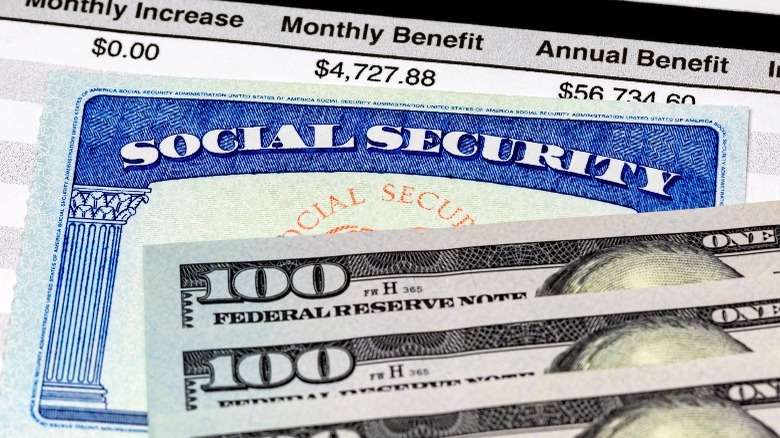Analysts Forecast 2.5% COLA Increase For Social Security In 2025
Fall is abuzz with financial anticipation this year. Between the potential promise of lowered interest rates (thanks to falling inflation rates), to the election-fueled hope that the "September Effect" might avoid its usual negative returns, the financial world is keen for an upswing. And while, on the whole, lowering inflation and costs is a benefit for most Americans today, there could be some unintended consequences, especially when it comes to Social Security benefits.
For starters, it's important to realize that the federal government can (and does) make something known as a cost-of-living adjustment (or COLA, for short) for Social Security beneficiaries. COLA is essentially a percentage increase made to a person's Social Security benefits and/or Supplemental Security Income (SSI) in order to counteract the negative financial effects of things like inflation and rising prices. COLA payments were made automatic, with a changing yearly rate, starting in 1975, and the annual COLA rate is generally in keeping with third-quarter data from a specific subset of the Bureau of Labor Statistics' Consumer Price Index (CPI).
In the last several years specifically (largely due to the COVID-19 pandemic and resulting inflation) COLA payments have experienced a bit of a roller coaster, with the highest rates seen since the early 1980s. For instance, in 2023, the COLA rate was 8.7%, but the rate dropped in 2024 to the current rate of 3.2%. Now, experts are predicting that the COLA rate will drop again in the new year, with a 2025 rate increase of just 2.5%.
How, exactly, is COLA calculated?
Cost-of-living rates are determined by using data from the Consumer Price Index for Urban Wage Earners and Clerical Workers (CPI-W). This CPI subset looks at only certain demographic groups while averaging the costs of more than 200 different goods, including things like food, beverages, housing, transportation, and common household goods. The CPI-W data focuses on how costs are experienced by households in which at least half of its annual income is earned through clerical or hourly wage-paying jobs.
As for how the CPI-W will ultimately affect 2025's COLA amounts for retirees, the Social Security Administration won't officially announce its new rate until October; however, current data can give us a good indication of how third-quarter numbers might look. Per the August 2024 CPI report, the CPI experienced a 2.5% increase compared to last year, which was down from 2.9% in July. This not only extended the CPI's cooling streak to five months, but, combined with core inflation remaining steady at 3.2%, signaled a general overall cooling in the economy.
This means that, according to the Social Security Administration's formula, most Americans won't need as high of a COLA rate next year as they have in the last couple of years. This is largely why analysts predict a 2.5% rate increase for 2025. It's also worth noting that, while it might seem like a significant drop compared to 2022 and 2023, technically the average benefits COLA rate for the last decade was 2.6%. This means the 2025 rate will actually be in keeping with more normal COLA rates.
Other costs eating your Social Security benefits
According to a 2021 study from the Center for Retirement Research at Boston College, two factors, in particular, undermine the effectiveness of COLA in easing inflationary concerns for retirees. The first is Medicare Part B premiums (which many retirees use to cover physician, outpatient, and home health services), that are deducted from Social Security benefits up front (aka before a recipient ever receives their benefits amount). Worst of all, these premiums often grow at a much faster rate than COLA does. According to an analyst for CNBC, Medicare Part B premiums increase by an average of 5.5% per year, whereas COLA rates average just 2.6% annually. This means that many retirees are not only not being buffered from inflationary increases (despite that being the entire point of COLA in the first place) but they aren't even able to keep up with their increasing medical premiums every year.
The second factor impacting U.S. retirees' take-home income is that a growing portion of Social Security benefits amounts are subject to income tax (the policy of taxing benefits started in 1984). Currently, if an individual retiree's income is between $25,000 and $34,000, or between $32,000 and $44,000 for those who are married and filing jointly, they could pay taxes on up to half their benefits amount. For those earning over $34,000 as an individual, or $44,000 as a married household, 85% of your benefits amount could be taxed. This increasingly adds to the fear that people will run out of money during retirement.

